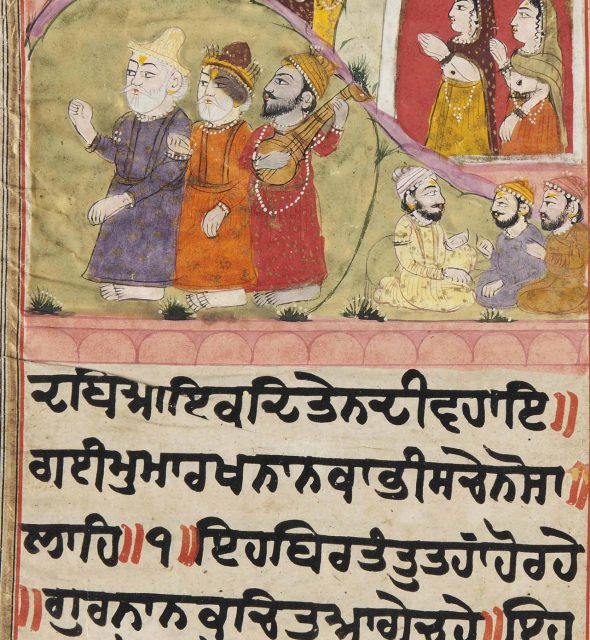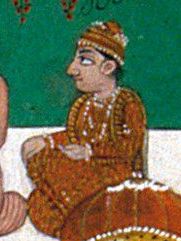
ADI SAKHIAN (adi = first; sakhian, plural of sakhi = anecdotes, stories, discourses, parables) is one of the early compilations but not the first of the extant janam sakhi traditions to evolve. The manuscript, dated 1758 Bk/ AD 1701, and copied by Shambhu Nath Brahman was first located by Dr Mohan Singh Diwana. While teaching at Panjab University, Lahore, prior to the partition of India in 1947, Mohan Singh Diwana discovered in the University`s library a janam sakhi manuscript which differed from other extant Janam sakhis and bore an earlier date. Dr Diwana believed it to be a version of the earliest of all janam sakhi traditions and bestowed on it the name Adi Sakhian.
ANGAD DEV, GURU, (1504-1552), the second of the ten Gurus or prophet teachers of the Sikh faith was born Lahina on Baisakh vadi 1, Sammat 1561 Bikrami, corresponding with 31 March 1504. His father, Bhai Pheru, was a Trehan Khatri and a trader of humble means, whose ancestral home was located near the village of Matte di Sarai, now known as Sarai Nanga, 16 km from Muktsar, in present day district of Faridkot in the Punjab. His mother\'s name is variously given as Sabhirai, Ramo, Daya Kaur and Mansa Devi. In Magh 1576 Bk/January 1520, he was married to Khivi, daughter of Devi Chand, a Marvah Khatri from the village of Sanghar, near Khadur, in Amritsar district.
Gurudwara Chowbachcha Sahib at Dharampura, Lahore Chowbachcha Sahib bus stop lies between Mughalpura and Dharampura by the canal flowing through Lahore. Chowbachcha Sahib the shrine of Ram Rai Ji is situated in the locality north of this bus stop. It is a spacious building. The main door is very huge. About 200 steps inside the main enterance the passage splits into two lanes. There is a small round door. It is the door of Gurdwara Sahib. There are four similar doors.
DAUDHAR, village 22 km southeast of Moga (30° 48`N, 75° 10`E) in Faridkot district, claims a historical shrine called Gurdwara Patshahi Pahli the Chhevin (first and sixth), commemorating the visits of Guru Nanak and Guru Hargobind, Nanak VI. Situated on a sandy mound amidst cultivated fields about one kilometre to the northwest of the village, the Gurdwara is referred to in the Gurushabad Ratnakar Mahan Kosh as Gobindgarh, but is locally known as simply Kutia, i.e. a cottage.









